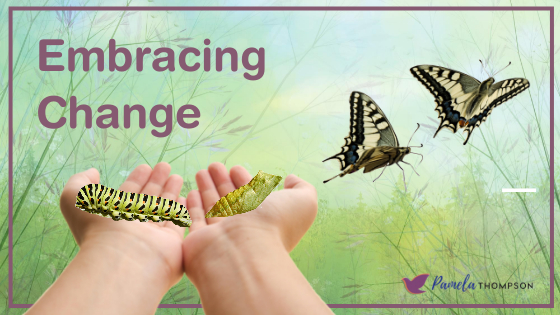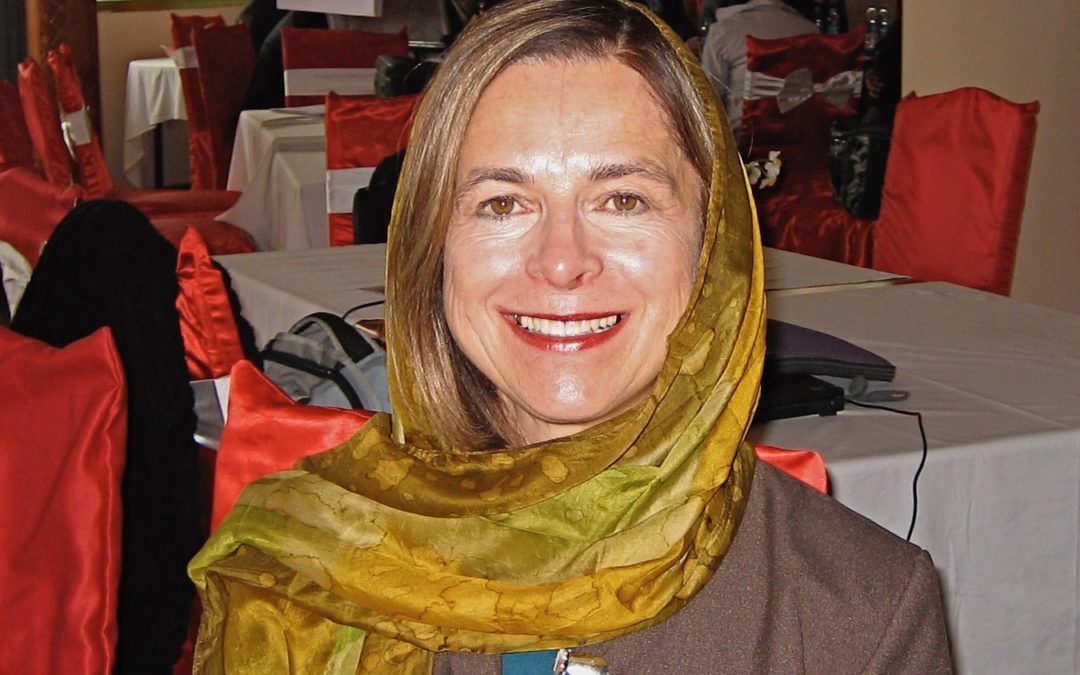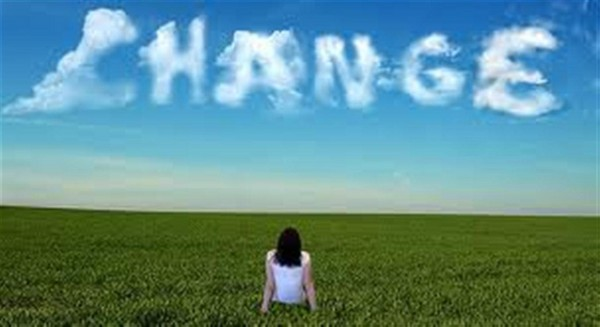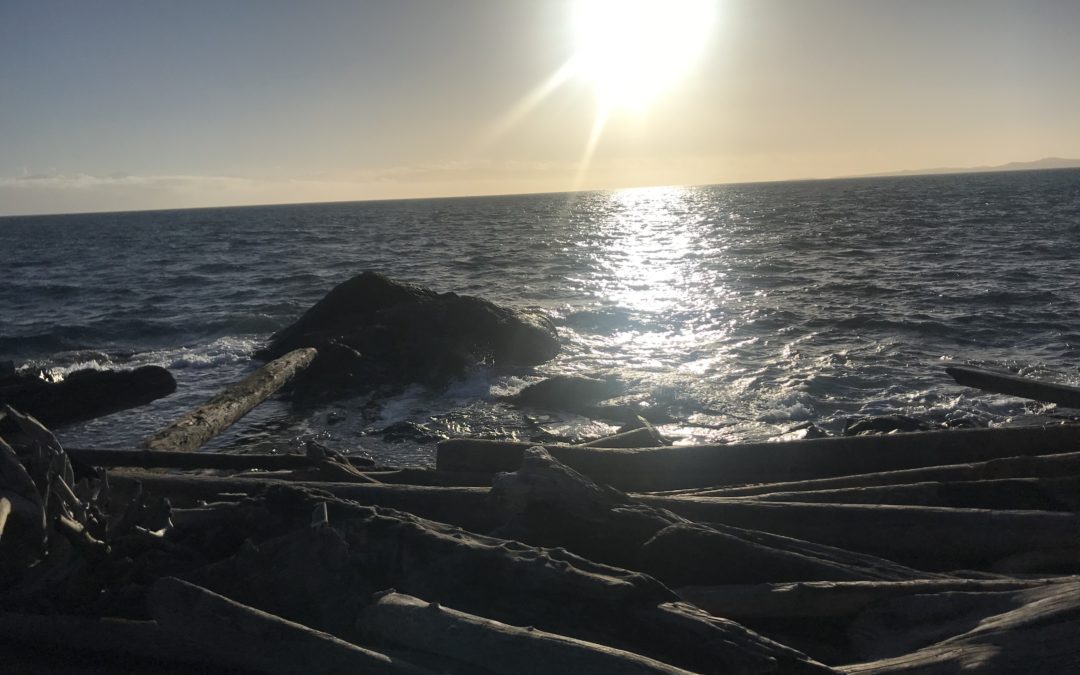
by pam | Oct 20, 2022 | Change, Coping with Change, Life Transitions
For some time, I have questioned whether we can truly manage change whether it be in our personal, or our professional lives.
I would like to propose that instead of “managing change” we explore a new way of thinking about change. Managing something to me means we have control over it. Do we really have control when something comes at us out of the blue or is imposed on us such as when we get laid off or when our partner says they no longer love us?
What if you made friends with change and talked about embracing change rather than managing it? What might that look and feel like?
I have developed a 5-step Art of Change Framework underpinned by the belief that embracing change is a creative process that opens us up to new possibilities and based on the metaphor that life is a dance.
This framework includes a process where you explore how you typically respond to change and why, and then receive tools and a framework to guide you on your transition journey.
The Art of Change Framework is underpinned by evidence from neuroscience, organizational development, the health-promoting and healing benefits of the arts, and eastern psychology. It is also based on my own journey and work with consulting and coaching clients on 5 continents for over 30 years.
In this process I draw on the work of William Bridges, an organizational theorist[1]. He differentiates between a life change and a life transition. He says that a change is external and situational; something that is tangible that we can see such as a separation agreement or a pink slip. Whereas a transition, is the internal psychological work we do to reorient and readjust ourselves to the new external reality.
Many people make the change but don’t do the transition work. This often results in them repeating the same patterns in their lives and remaining unhappy and unfulfilled. An example is someone who always goes after positions for the money without taking the time between jobs to identify their passions and their core values. Or a woman or man who marries three, four or five times, often choosing a spouse that looks similar to the previous one, and after the honeymoon phase revisiting the same issues as the previous relationships and remaining unhappy and unfulfilled or moving on to the next one. This is because they haven’t taken the time between relationships to find out who they are and what they truly value in a relationship.
We are physiologically hard-wired to fear change. Our amygdala (part of our brain) is continually scanning our environments for things that are different; things that might be perceived as a change. When it perceives a threat, it causes our body to release stress hormones that put us into fight, flight or freeze. In none of these modes are we in a position to make thoughtful decisions.
When we fear change, we tend to resist it and that has negative impacts on our bodies, our minds, our relationships, our workplaces and our bottom lines. If you’d like to learn more about the negative impacts of resisting change and the 5-step Art of Change Framework visit https://pamela-thompson.com.
I welcome your comments below. Do you believe we can manage change?
[1] Bridges, William, TRANSITIONS Making Sense of Life’s Changes, 2004.

by pam | Jul 26, 2022 | Change, Coping with Change, Embracing Change, Life Transitions, Women in Business
What if you could reinvent yourself and live the life of your dreams?
What if you could leave your corporate job and start a business based on what makes your soul sing?
About six months ago I started hearing people use the words “I want to reinvent myself” or “I have reinvented myself.” I got curious and did some research on “reinvention”. I also reflected on my own life and realized how many times I have reinvented myself.
I’d like to share a true story of someone I know who reinvented themselves. Their name has been changed for confidentiality.
I met Donna at a Newcomer’s Club shortly after I moved to Victoria about five years ago. Donna shared that she had moved to Victoria with her husband and within six months of arriving, her husband, the love of her life, died of cancer. She realized she was dealing with a number of life transitions and signed up and attended a one-day retreat I did on “Embracing Life Transitions”. She left with more insight into how she responds to change and why, including a 5-step “Art of Change Framework”[1], and an action plan for moving forward.
Recently Donna shared with me that she is no longer the woman she was when her husband Ben died. She revealed that he was an extreme extrovert and she lived life “on his coat tails”. She reflected that when she got married, she was quiet and lacking in confidence; and that her confidence built being with Ben, and she counted on him for support.
Since Ben’s death, Donna began to work on herself and getting in shape. She acknowledged that over the past few years, she has felt like a single woman who is finding her new self. When she meets new people, she is Donna only, and that has impacted who she is and how she acts.
Donna and Ben sailed for more than thirty years. Ben was the captain. Donna assisted as crew. Since Ben’s death Donna decided she wanted to learn to be captain, and after a number of sailing courses she now not only captains her boat but participates in local races.
Recently, Donna revealed to me that she is no longer the woman she was when Ben was alive. She has reinvented herself and is now “Lady D”. She even christened her sailboat “Lady D”!
How did Donna reinvent herself and what does it take to let go of fear and reinvent yourself?
Stay tuned for the next installment!
Do you relate to Donna? Have you reinvented yourself? What is the biggest lesson you learned from doing so? I welcome your thoughts and comments below.
[1] https://pamela-thompson.com/strengthen-impact-world-dance-change/

by pam | Jun 13, 2021 | Change, Embracing Change, Life Transitions, Managing Change, Women in Business
The pandemic has been a time of transition for us all.
- You may have transitioned from having a job you loved to being laid off
- You may have transitioned from working in the office to working at home
- You may have experienced a relationship ending due to the stress of working at home together while at the same time looking after young children
- You may have had time to reflect and realize that you want to make a bigger difference in the world
- You may be feeling exhausted and lack clarity on your next steps.
Imagine having practical tools and a proven process to support you to move through transitions in your life and work. One that supports you to move from anxiety and uncertainty toward clarity and fulfillment.
I believe that embracing change is a creative process that opens us up to new possibilities.
My 5-step “Art of Change Process” enables you to identify a change you are struggling with, understand how you respond to change and why, let go of beliefs, emotions and behaviors that are holding you back, envision the change you want to see and create an action plan to move forward.
The “Art of Change Process” can be applied to both your personal and work life and to teams if you are a leader. It enables you to move from resisting change to embracing it.
You may be thinking “I love change. I don’t resist it.” Yet if you peel back the layers and reflect on changes in your life, you may come to realize that many of the changes YOU initiated, so they felt easy to embrace. However, if you reflect on those changes that were imposed on you or initiated by someone else, you may find your experience is different; e.g. being “let go” from a job or having a partner leave you when you weren’t expecting it.
A key concept I have found helpful for myself and for clients has been understanding the difference between a life change and a transition.
William Bridges in his book “Transitions – Making Sense of Life Changes”[1] based on over 30 years of working with people and organizations, noted that a life change is external and situational such as divorce papers or a pink slip; something tangible that we can see. Whereas, a transition is internal and psychological; the internal work we do to reorient and readjust to our new external reality. Many of us do the change, but don’t do what I call the “transition journey” work.
Based on more than 25 years of consulting and coaching with individuals and organizations on 5 continents, the Art of Change framework is a proven model for embracing change whether it involves getting unstuck and moving forward when change is imposed on us, or whether we initiate an organizational or life change.
The Art of Change Framework is a 5-step process that uses the metaphor of life as a dance. The steps are:
- Shine the Light – Explore how you respond to change and why
- Choose Your Dance – Identify the transition you want to work on and where you are on your transition journey
- Feel the Rhythm and Learn the Steps – Commit to embracing change in your body rather than resisting it, and begin doing the work associated with the phase of the transition journey you are in
- Practice, Practice, Practice! – Do the work that includes letting go, identifying lessons learned, envisioning the work or organization of your dreams, taking action, and viewing change as a creative process that opens you up to new possibilities
- Consciously Share Your Dance with the World – Observe the positive changes in yourself, how others respond to you, and the positive impact you have on your family, friends, communities and workplaces.
If you’re intrigued to learn more, I invite you to sign up for my complimentary “Art of Change Framework” white paper that includes practical tips and tools at https://pamela-thompson.com.
I welcome your comments and strategies you’ve found helpful to embrace life transitions below.
[1] Bridges, William, Transitions – Making Sense of Life’s Changes. Da Capo Press, 2004

by pam | Apr 13, 2021 | Change, Changemaker, Feminine Leadership, Leadership, Women in Business
In a recent post I shared how if you want to “be the change” you want to see in the world, it is essential to do some inner exploration. [1] I call it “exploring your inner landscape” – those beliefs, stories, and emotions that unconsciously run your life.
Many of us from a young age know “in our bones” we are here to make a significant difference in the world. That said, a number of us have no clue as to what that difference is.
To get clear on the difference you are here to make, it is important to uncover your unique talents and identify your passions.
I particularly like the definition Janet and Chris Attwood give to the word “passion” in their book The Passion Test. They say that “your passions are the loves of your life … things that are most deeply important to you … things that, when you’re doing them or talking about them, light you up.” They also note that “passion and love are inextricably intertwined because both arise from the heart. When you follow your passion, you will love your life.”
When you discover your passion and live your life aligned with it, you feel truly joyful, fulfilled, and at peace. It lights your fire and fuels your enthusiasm for life. You feel that you are indeed doing something that makes a positive difference in the world.
We all have unique gifts and talents to share with the world. Here’s a short exercise to help you clarify yours.
1. Draw a chart with two columns. In the first column, write down all the things that you are good at, or things that come easily and naturally to you. They could be things such as athletics, mathematics, writing, whatever you feel fits.
2. In the second column, write down the things you enjoy doing. They could include being in nature, teaching others, using your body, playing piano….If you feel challenged by this, think back to what you enjoyed doing as a child.
3. Now look at both lists and circle the items that are similar or identical. Then review the circled items. Go inside and get in touch with the feeling each one evokes inside you. Does it excite you? Does it have little or no effect on you? Rate each item on a scale from 1 to 10 according to the level of passion you have around it (1 being “no interest at all” and 10 being “red hot”).
I encourage you to do this exercise. Sharing your findings with others has additional impact as you may gain insights and support from them.
I’d like to emphasize that just being good at something doesn’t mean it is your passion or will fulfill you if you work in that area. What you’re good at can provide clues to our passions but are not necessarily connected with them. A passion is often a blend of what we love and what we’re good at. As well, a passion may change during our lifetime. [2]
So, what’s next? After you discover your passion(s) it’s helpful to identify either a new area of work you wish to pursue or a volunteer activity that will “light you up”. Getting support from a coach or mentor can be helpful at this point.
An organization that I’m passionate about that is alignment with my passions of loving travel and working with diverse people and cultures, teaching, coaching, and mentoring, designing and co-creating workshops, projects and programs that have social impact, and my own love of learning, as well as my values of: contribution and connection is Female Wave of Change – https://femalewaveofchange.com. I am honored to be Ambassador for Canada of Female Wave of Change, a global movement that unites women (and some men) changing the world into a better place for future generations through authentic feminine leadership. As part of my commitment to growing the community in Canada I recently incorporated the national non-profit Female Wave of Change Canada – https://fwoccanada.com.
If you value being part of a community of heart-centered women from diverse backgrounds and cultures, are passionate about making a difference in one or several of the areas of: environment, education, economy, health, and humanity, I encourage you to check us out. Questions? Email pamela@femalewaveofchange.com.
[1] https://pamela-thompson.com/how-to-be-the-change-part-1/
[2] This section and exercise is largely excerpted from my book Learning to Dance with Life: A Guide for High Achieving Women, chapter 8, pp. 107-109.

by pam | Mar 23, 2021 | Change, Creative Living, Embracing Change, Leadership, Women in Business
During these times of unprecedented change, how can you “be the change you want to see in the world”? You may be wanting to initiate change in your family, community, workplace, your own business … the world. Where do you start?
A good place to start is with yourself. Do some inner exploration. Some useful questions are: “How do I typically respond to change? Rate yourself on a scale from 1 to 10 – 1 being scares me to death and 10 being I thrive on it. Then ask yourself “How do I typically respond to a change that is imposed on me or comes out of the blue?” Rate yourself again on a scale from 1 to 10 and notice if there is any difference. It’s helpful to journal your responses to these questions.
Typically, we rate ourselves higher when we initiate or feel we have control over a change. When we feel it is imposed or comes “out of the blue” we often rate ourselves lower. That said many leaders thrive on change and you may be one of them.
Now ask yourself, “When I think about change what thoughts, words, emotions come up for me?”
You may also focus on a change that you are currently having to deal with and notice what thoughts, words or emotions come up for you. If there are some negative ones such as anger, resentment, fear … (which are natural), imagine each one as a rock in a knapsack on your back, feel the weight of them and then imagine releasing them all and having them all fall to the ground.
It is extremely important to identify negative feelings in our bodies, and to acknowledge and consciously release them, in order for us to move forward and embrace a change.
It is helpful to identify any old stories about change you may have learned from people close to you early in life who were trying to keep you safe. You may wish to rewrite your narrative around change and underpin it with a positive belief such as: “Embracing change is a creative process that opens me up to new possibilities.” Notice how that makes you feel.
Being self-aware of how you respond to change is important, as people close to you in your family, community, workplace … look up to you and learn from how you model and respond to change. Do you typically embrace or resist it?
What insights have you gotten from these exercises? I welcome your thoughts and comments below.

by pam | Jan 20, 2021 | Benefits of being in nature, Change, Uncertainty
How has 2021 started for you?
Do you feel the past few weeks have been a blur? Did you hit the ground running and feel like you haven’t stopped?
Or, perhaps you started the year more tentatively, preferring to move slowly, doing what you know and feel comfortable with. Wanting all of the uncertainty, stress and sadness associated with 2020 to disappear.
It’s interesting how each of us deal with uncertainty. Some of us stay busy and don’t take time to slow down so we can’t think too much. Others take it slow, really feel their emotions and proceed cautiously. Which category do you fit into? Or are you somewhere in between; some days moving at top speed and others feeling emotional and moving more slowly?
I’m one of the folks who “hit the ground running” and feel like I’ve “had my roller blades on” since January 4th.
Yesterday my body felt tired and stressed. I felt “wound up”. I finally listened and went for a walk in nature. I walked to the ocean’s edge and lay on a rock, soaking up the winter sun and feeling the tension in my body melt away into the rock, or so it seemed.
“Nature connects me with my soul.” That’s part of a faith statement I developed at a personal growth workshop years ago. Nature is such a great teacher and healer. I’m amazed when I walk by water or in a park or forest how relaxed I begin to feel. My stress just falls away. Do you relate?
There is a lot of evidence regarding the healing benefits of nature. This was brought home to us during COVID-19 when we saw air and water pollution levels go down within the first 6 weeks of lock-down.
How are you dealing with this ongoing pandemic? Are you able to get out in nature? If so, I encourage it and when you’re there, notice how you feel. Perhaps journal about it afterward. After the year we’ve all had, it’s important to be kind to our bodies.
Thinking of you and sending much love and healing energy your way!





